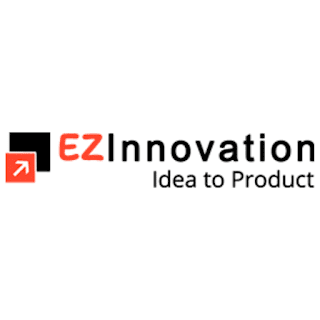EZ Innovation in Tech Alpharetta: EZ Innovation Can Revolutionize Your Startup Journey


Product design is a creative and iterative process that involves turning innovative ideas into tangible, functional, and user-friendly products. At the heart of this process lies the product design prototype - a crucial step that bridges the gap between concept and reality.
Find the essentials for creating an effective product prototype, highlighting the significance of this phase in the overall product development journey below:
Understanding the Product Prototype:
A product design prototype is a preliminary version of a product that serves as a tangible representation of the designer's vision. It allows designers, stakeholders, and potential users to interact with the product in a physical or digital form, offering insights into its functionality, aesthetics, and user experience. Prototyping enables designers to identify flaws, make improvements, and refine their ideas before investing significant resources into full-scale production.
Essentials for Creating an Effective Product Design Prototype:
Before diving into the prototype creation process, it's crucial to establish clear objectives and design goals. Define what you want to achieve with the prototype – whether it's testing a specific feature, assessing user interactions, or evaluating the overall aesthetics. Setting these goals will guide your prototyping efforts and ensure that your design decisions are aligned with your vision.
The success of any product hinges on its user-friendliness and usability. Incorporate a user-centred approach by understanding your target audience's needs, preferences, and pain points. The prototype should reflect these insights and provide a platform to test how well the product addresses user requirements.
Prototyping is inherently iterative. It involves creating multiple versions of the prototype, each building upon the previous one with incremental improvements. The iterative process allows designers to gather feedback, make necessary adjustments, and enhance the product's design and functionality over time.
Depending on the nature of your product and design goals, you can choose from various prototype types, such as low-fidelity paper prototypes, interactive digital prototypes, or even functional physical prototypes. Select the type that aligns with your objectives and resources.
While prototypes may not be the final product, they should exhibit a high level of attention to detail. Elements like colour schemes, typography, and user interface components should closely resemble the envisioned end product. This attention to detail provides a more realistic experience for testers and stakeholders.
Beyond aesthetics, a product design prototype should also undergo functionality testing. Ensure that the prototype's basic features and interactions are operational and aligned with the intended functionality of the final product. This testing phase helps identify technical challenges and areas that require refinement.
Feedback from stakeholders, potential users, and team members is invaluable during the prototyping phase. Actively seek input and be open to constructive criticism. Use this feedback to drive improvements and refine your design decisions.
If your product involves specific materials or cutting-edge technologies, the prototype should incorporate them to the extent possible. This integration allows you to assess how well these elements work together and identify any compatibility issues early in the design process.
User experience is a cornerstone of successful product design. A prototype should offer a realistic representation of the product's user journey, including navigation, interactions, and usability. This helps in identifying pain points and areas where the UX can be enhanced.
Prototyping doesn't have to be expensive. Consider cost-effective materials and methods that provide a clear representation of your design. Balancing cost-effectiveness with accuracy is essential, especially in the early stages of product development.
Conclusion:
In the world of product design, the prototype phase serves as a critical bridge between imagination and reality. It is the stage where ideas are transformed into tangible forms, where functionality and aesthetics are put to the test, and where the user experience is refined.
By embracing a user-centered approach, iterating on design concepts, incorporating feedback, and focusing on essential elements like functionality, materials, and user experience, designers can create an effective product design prototype that paves the way for successful and impactful products.
Remember, a well-crafted prototype not only refines your design but also reduces the risk of costly errors and ensures a smoother transition to the final product.
Comments
Post a Comment